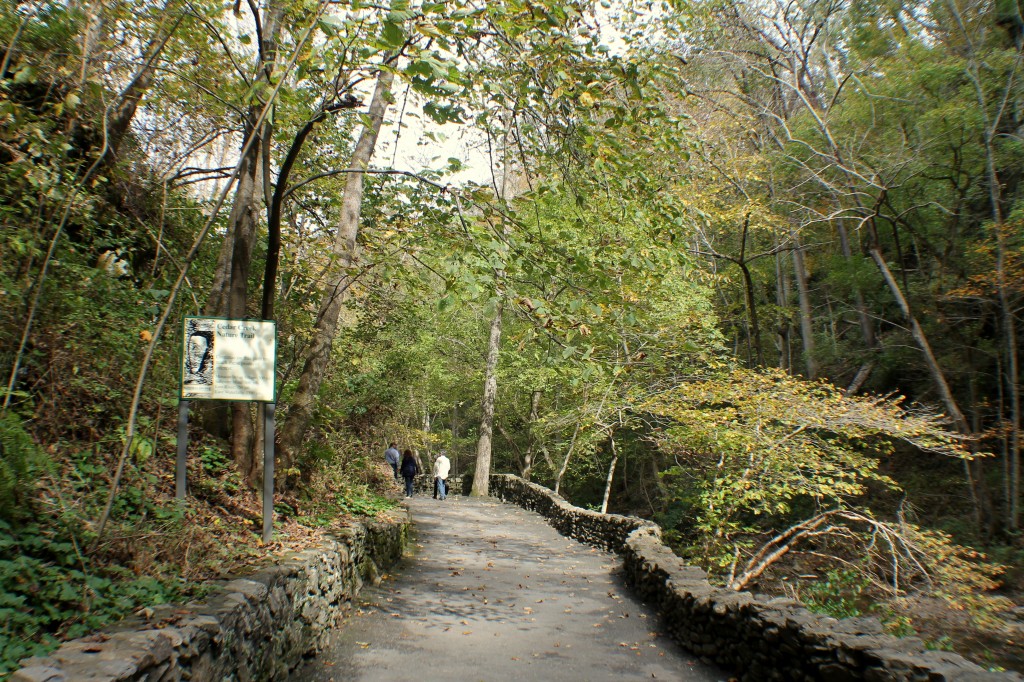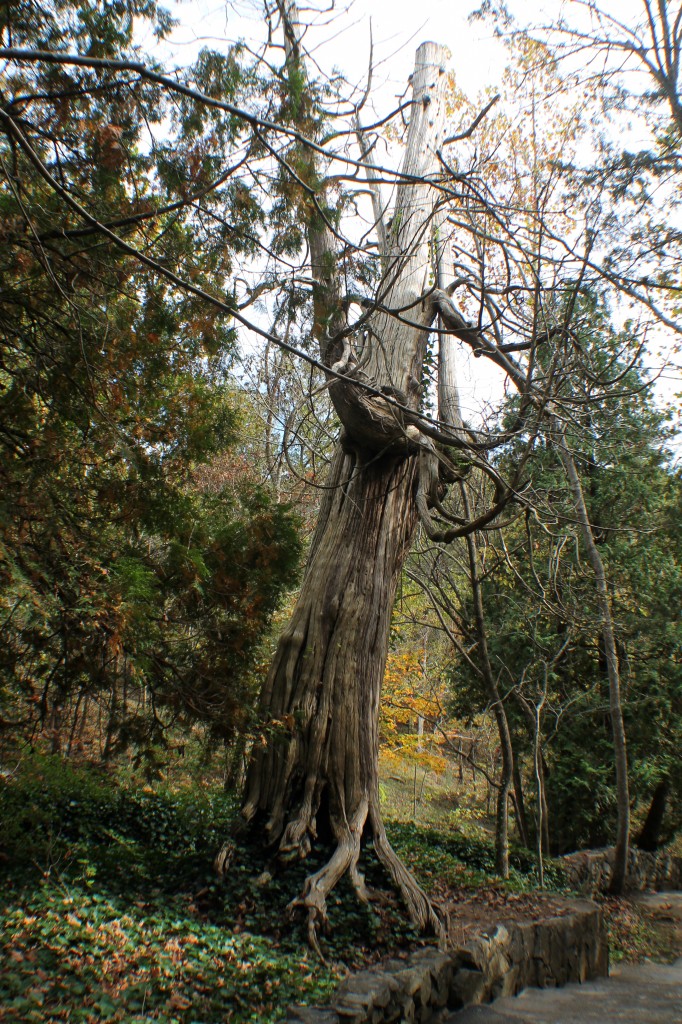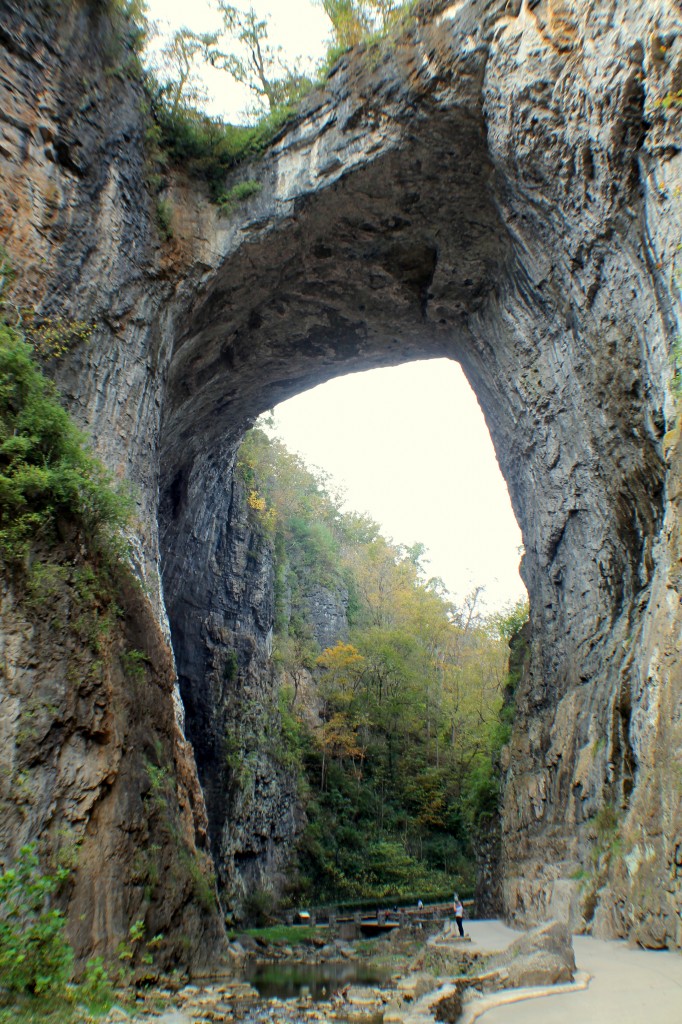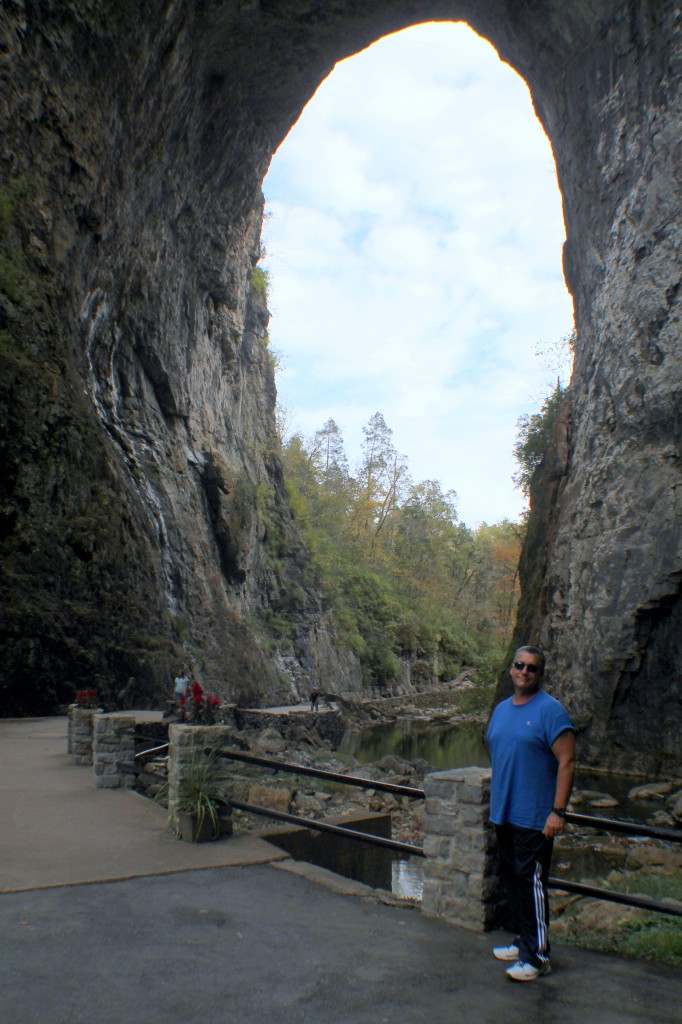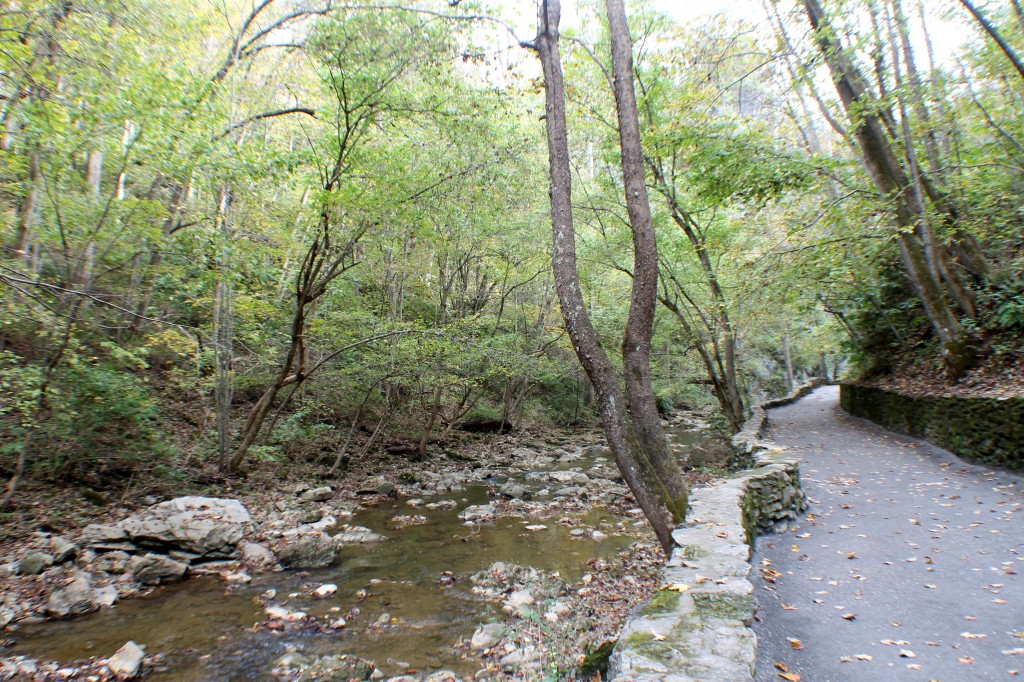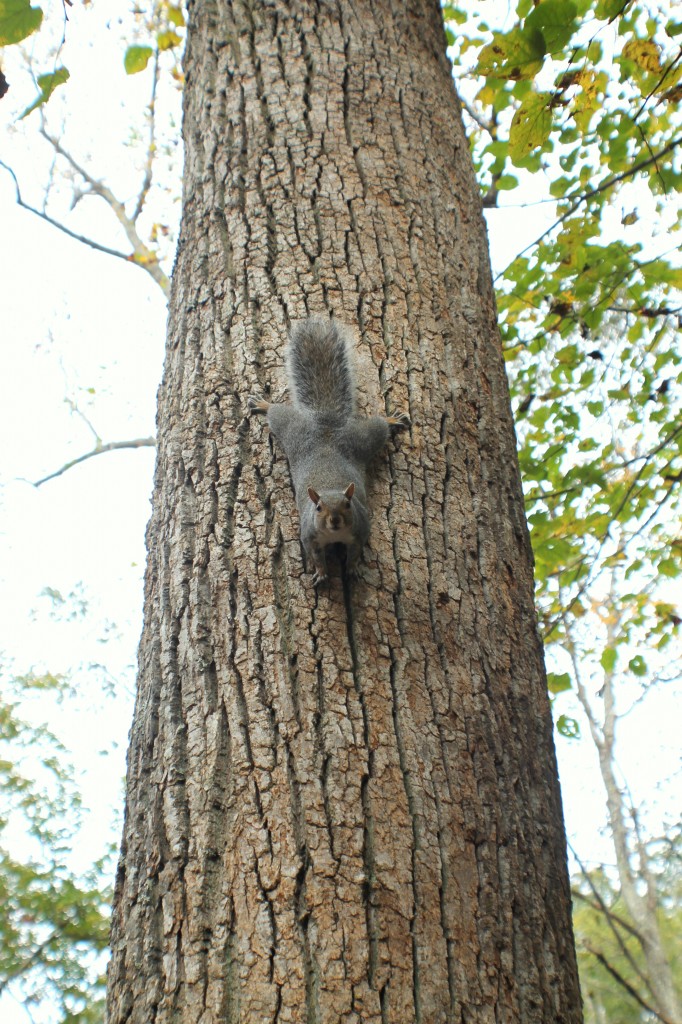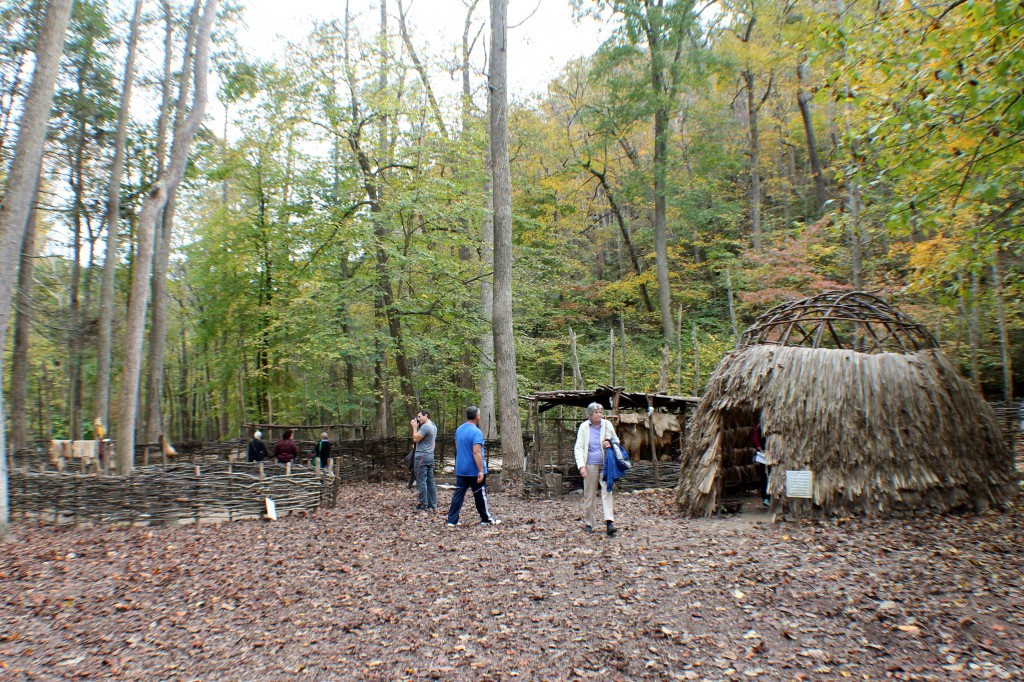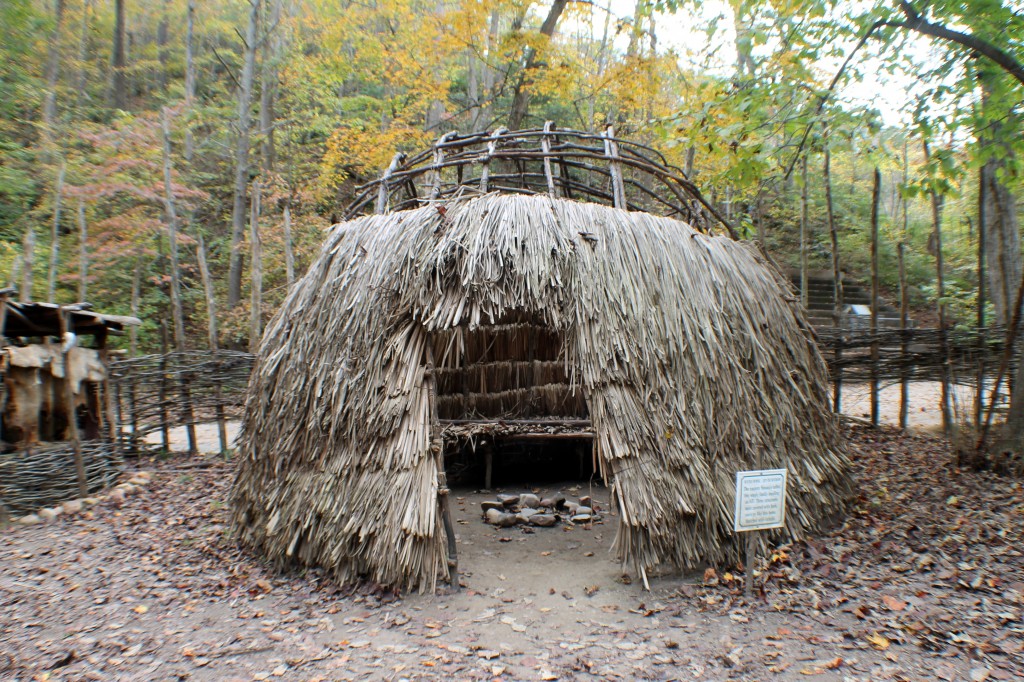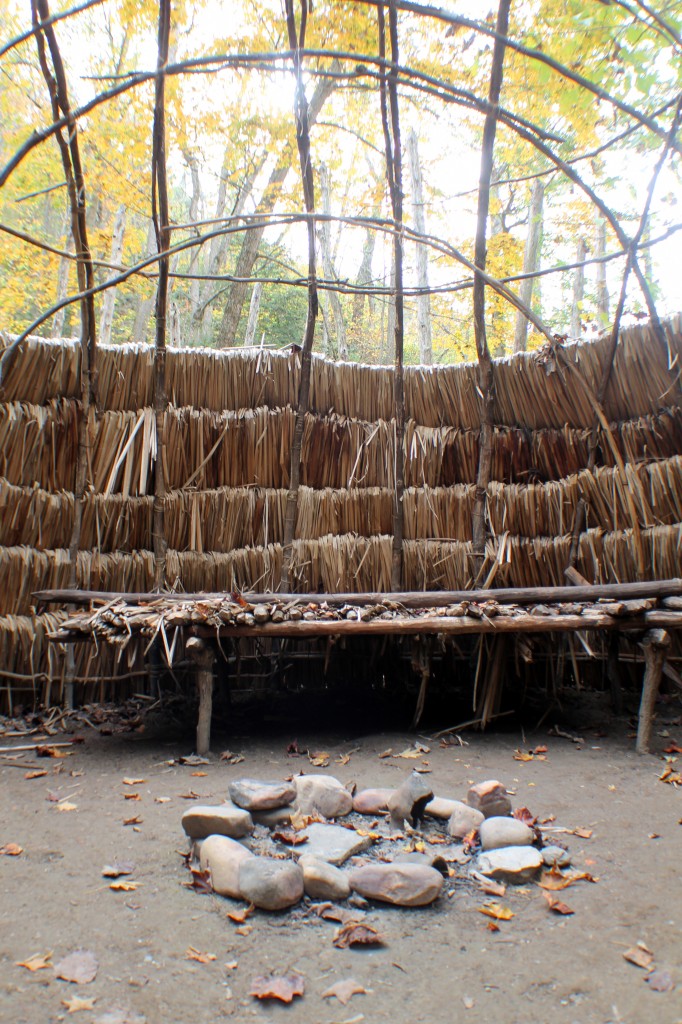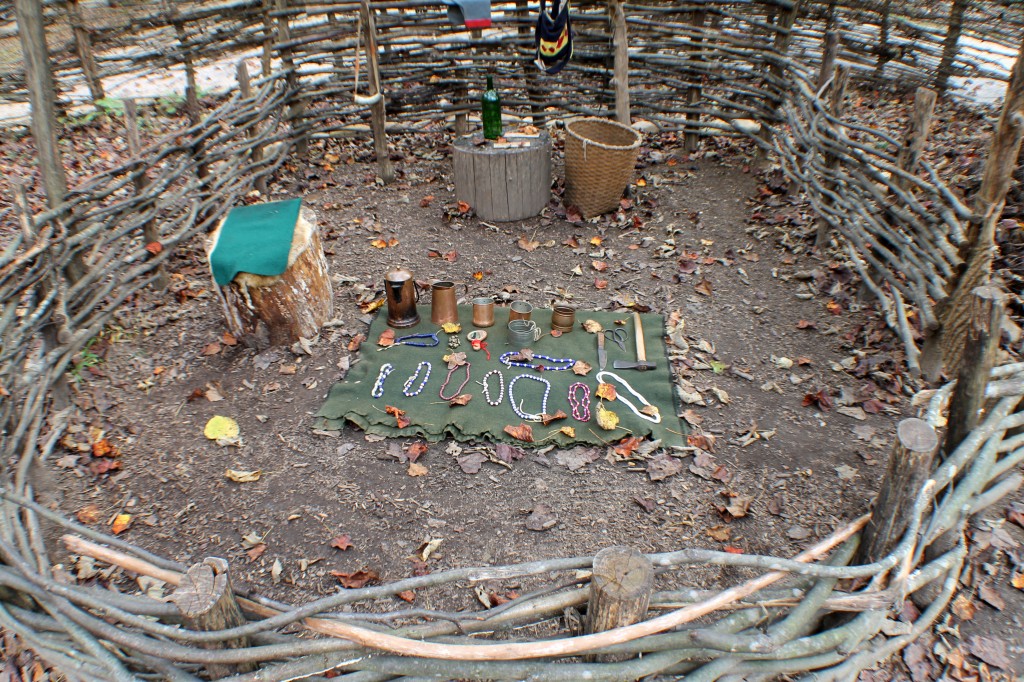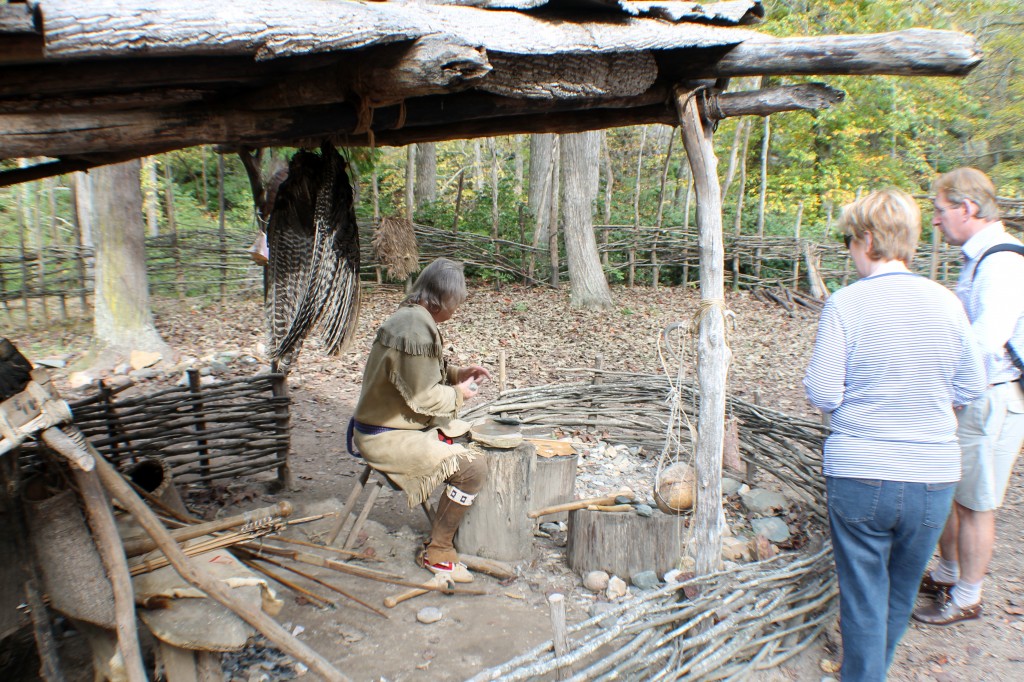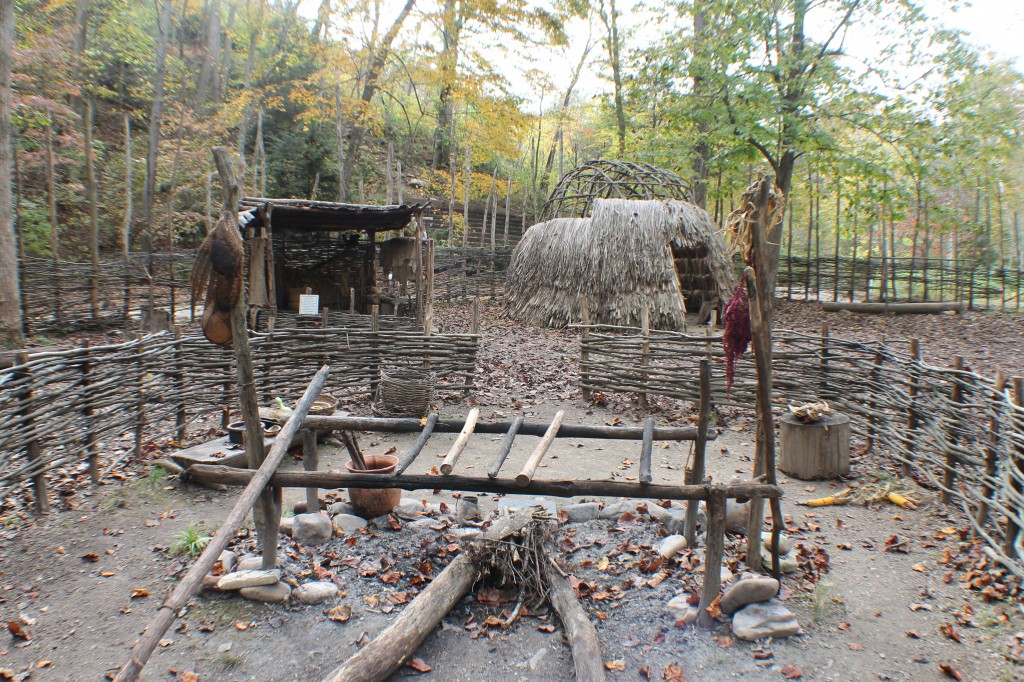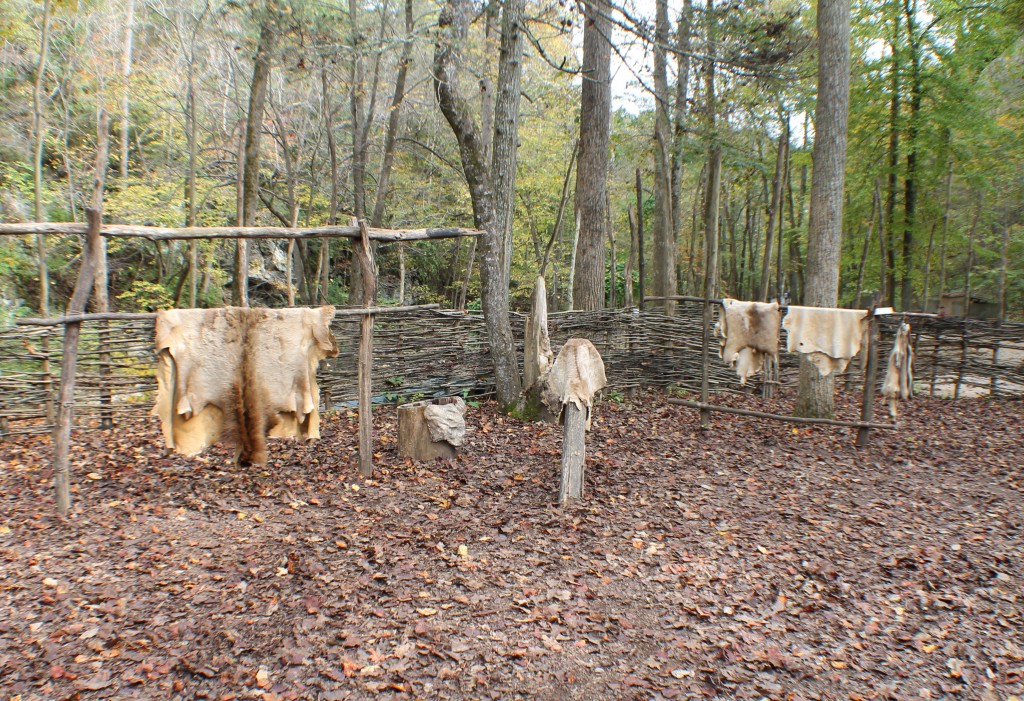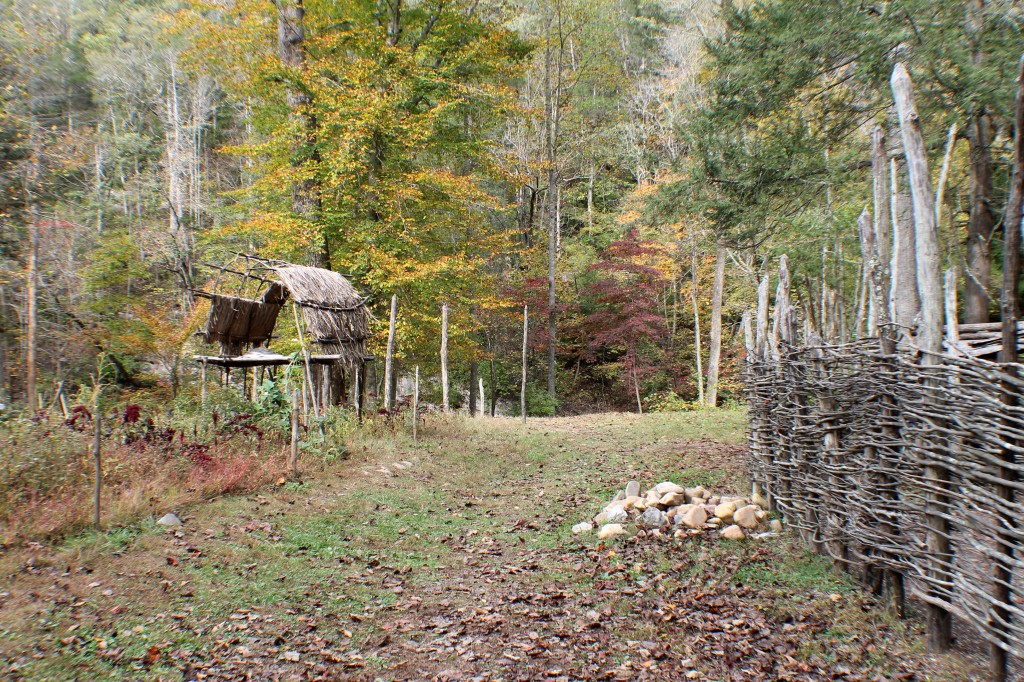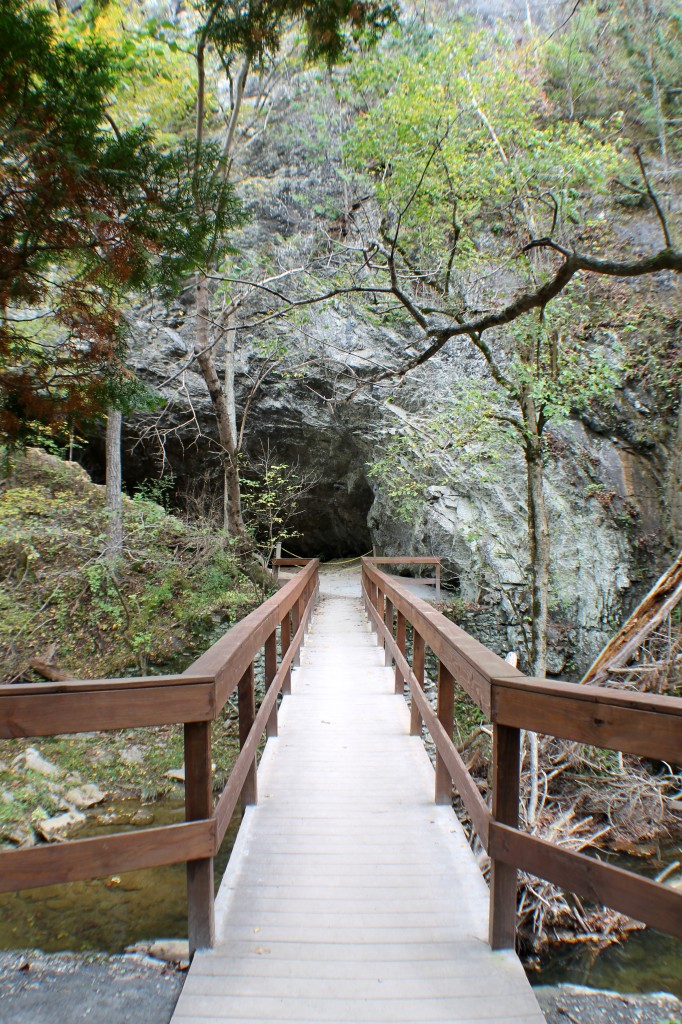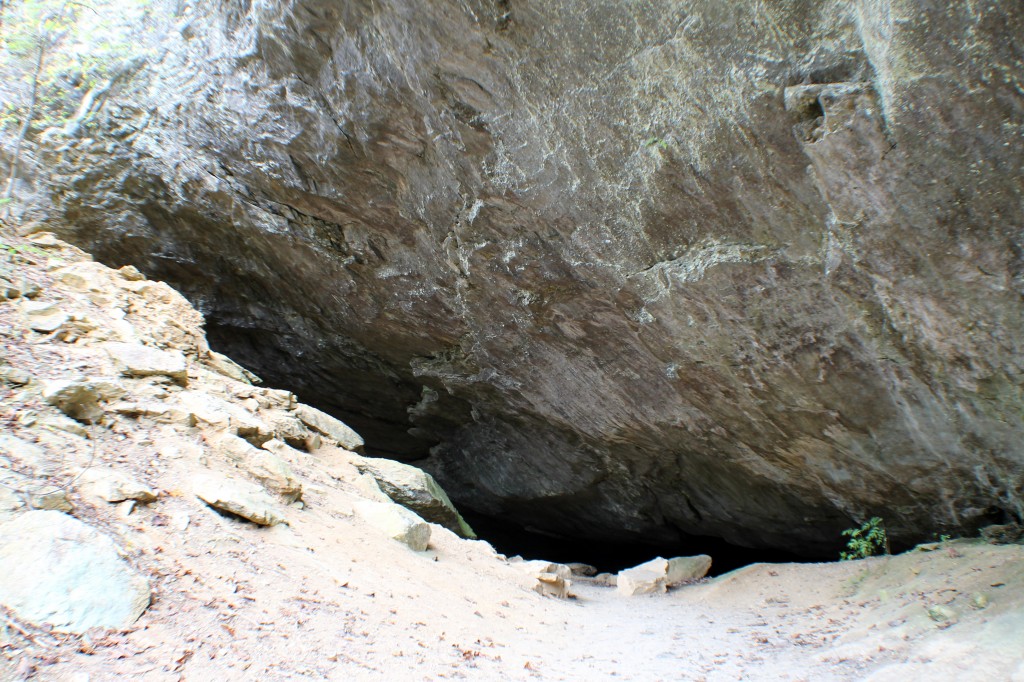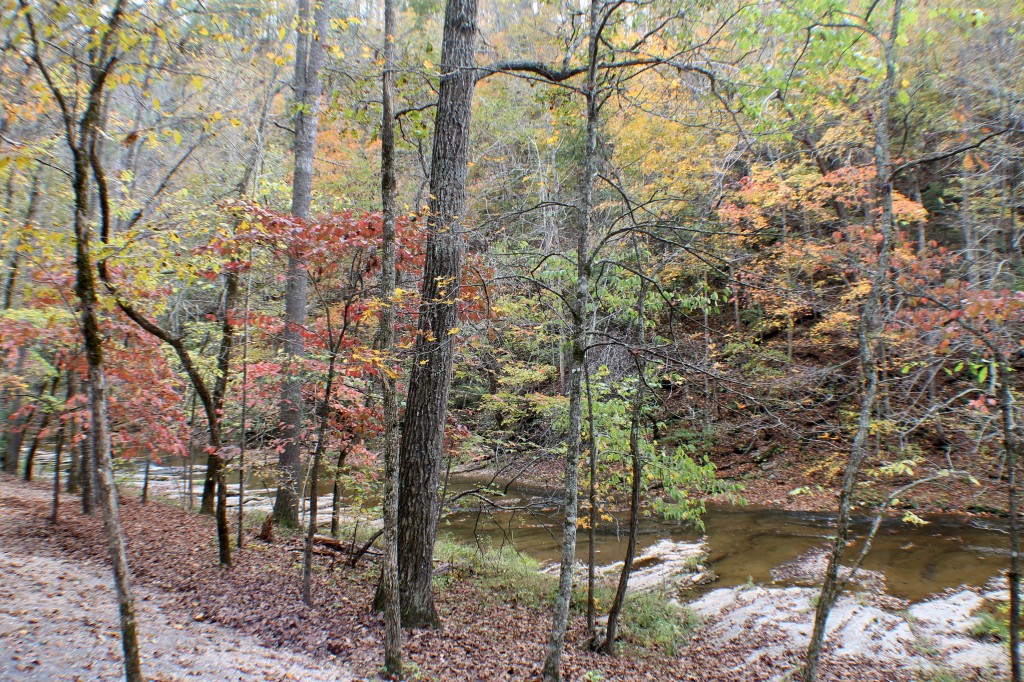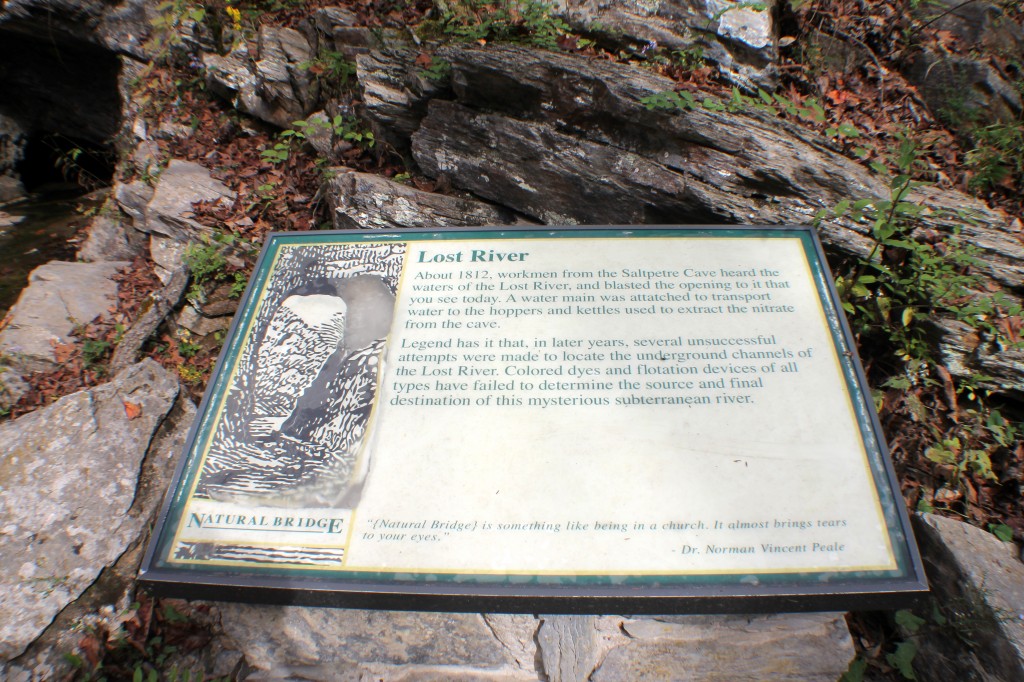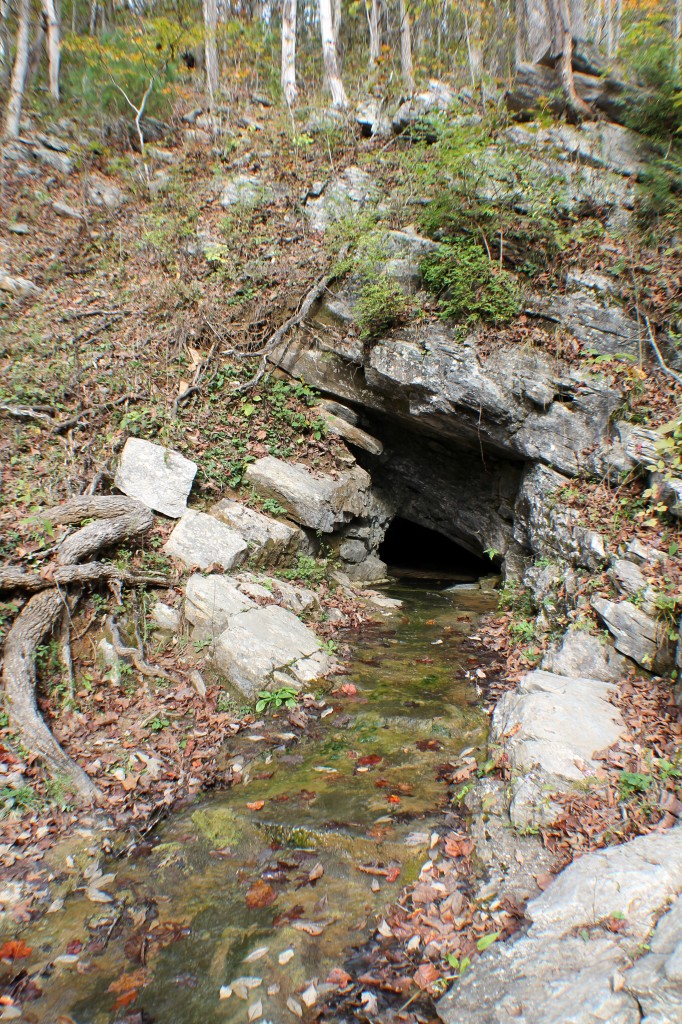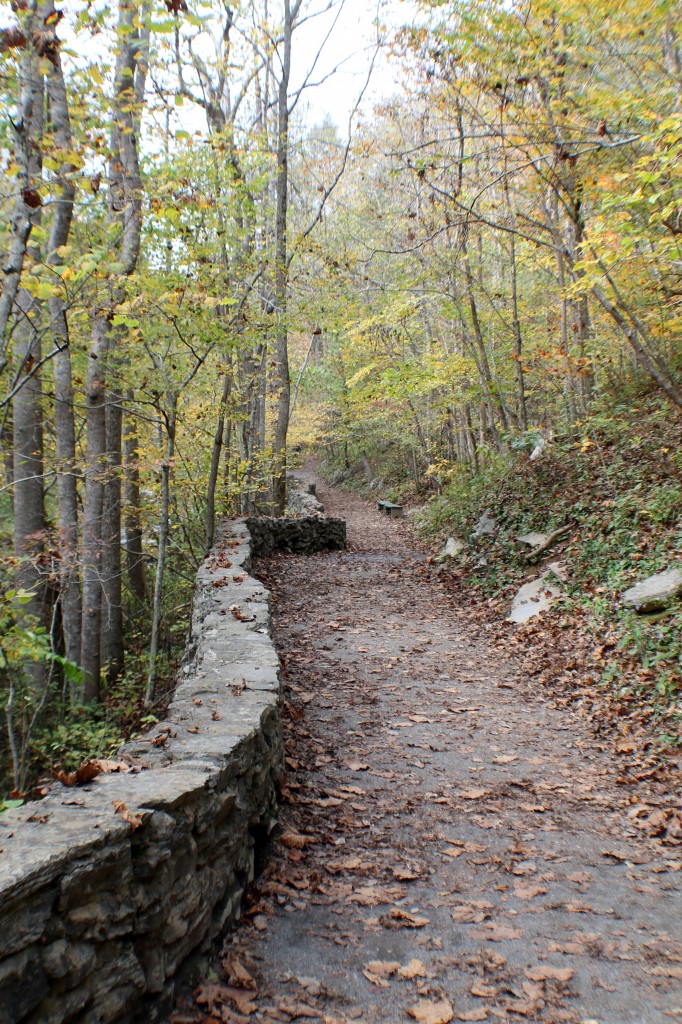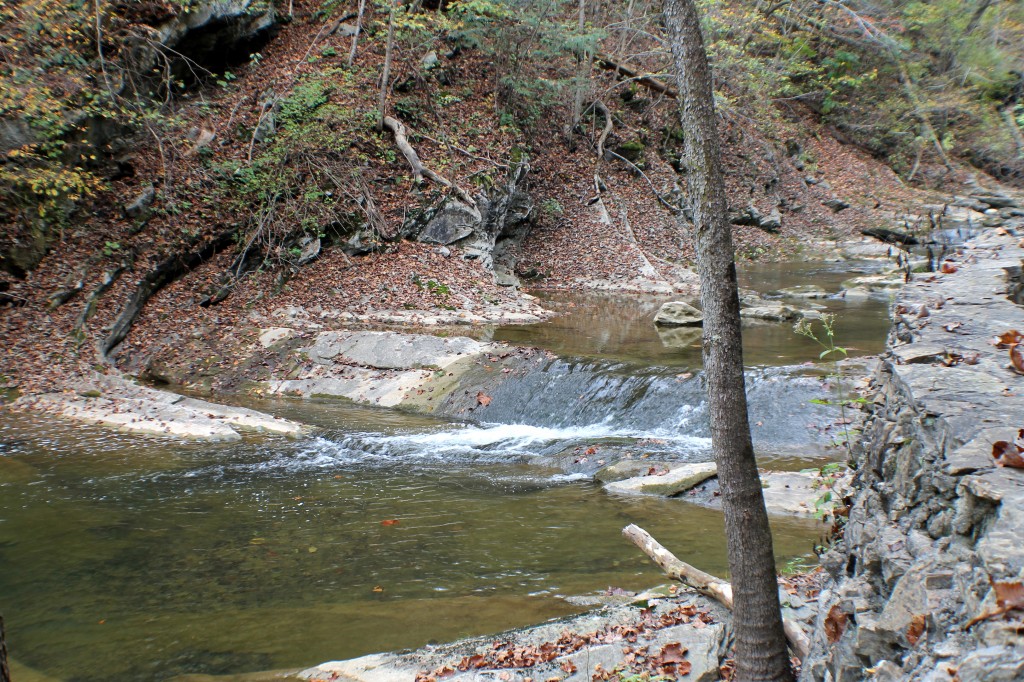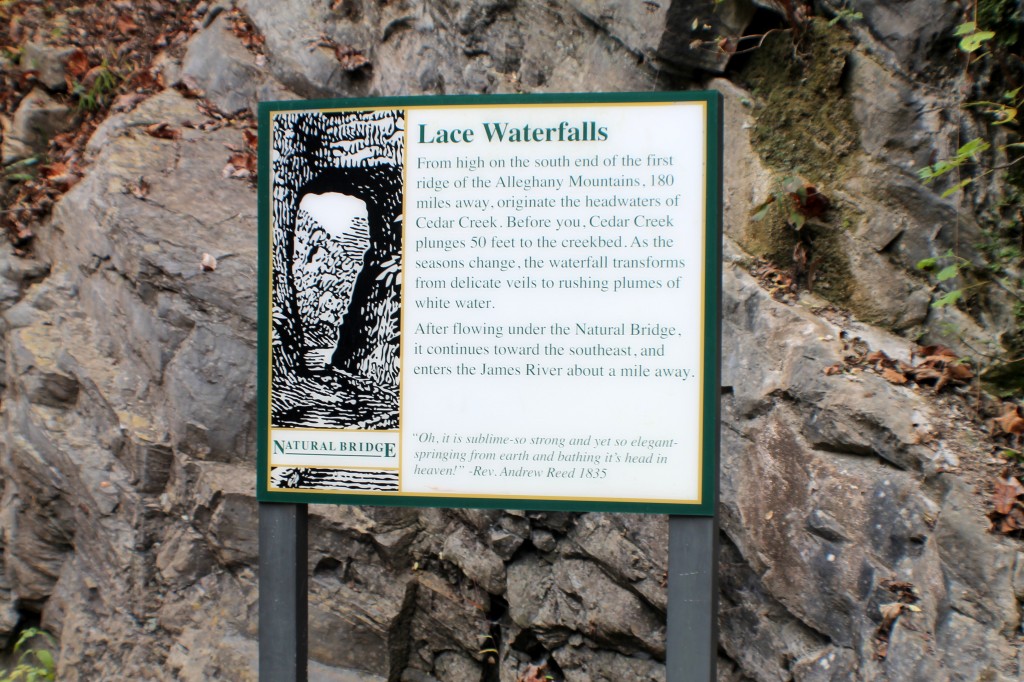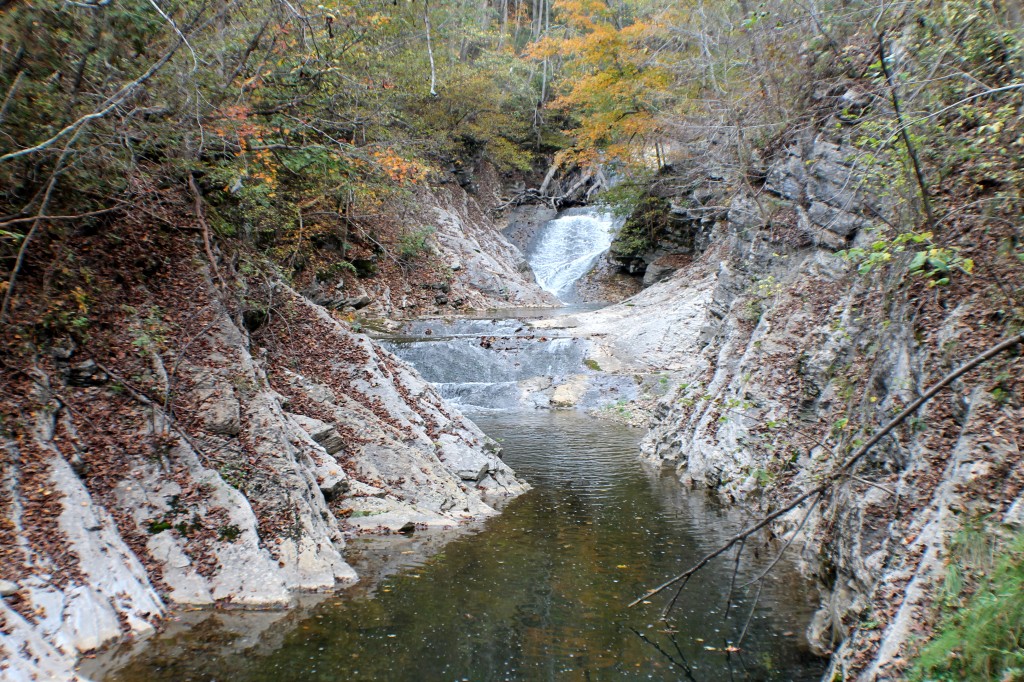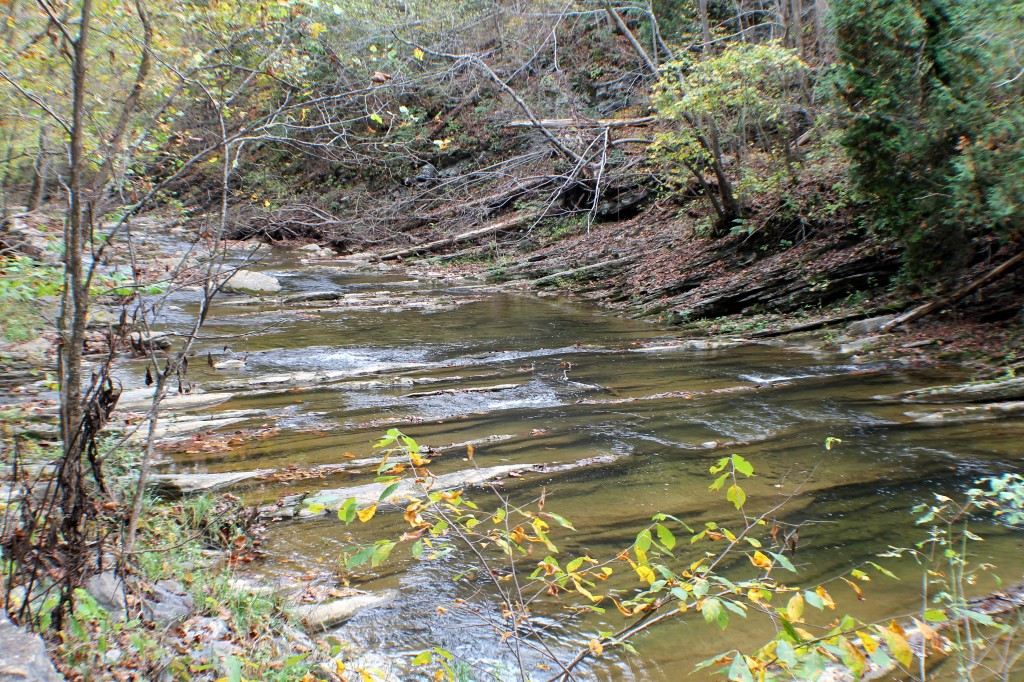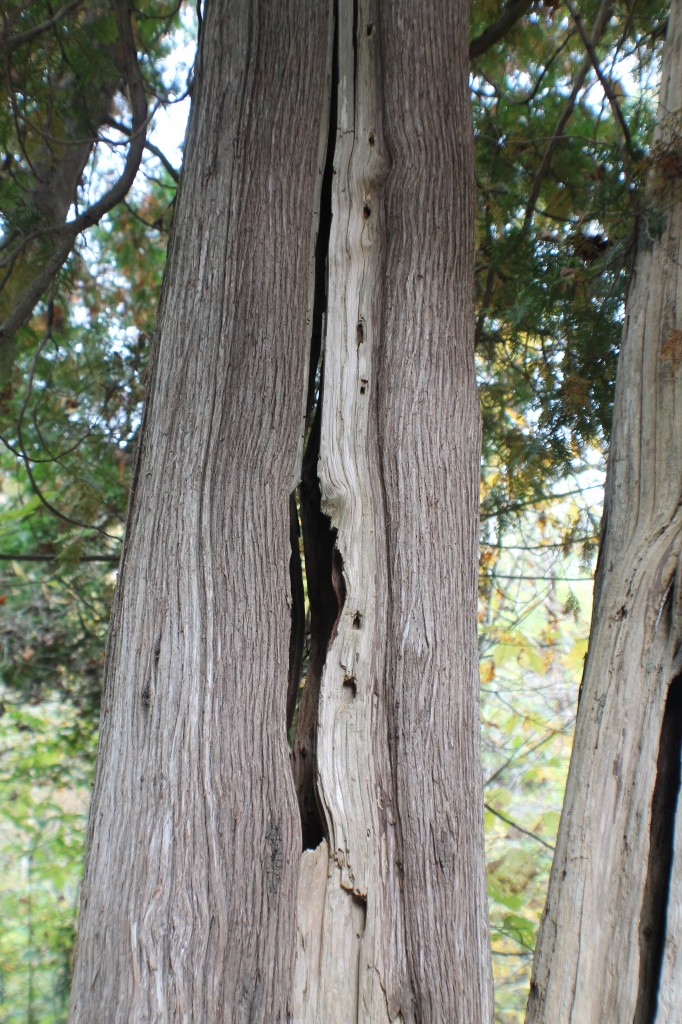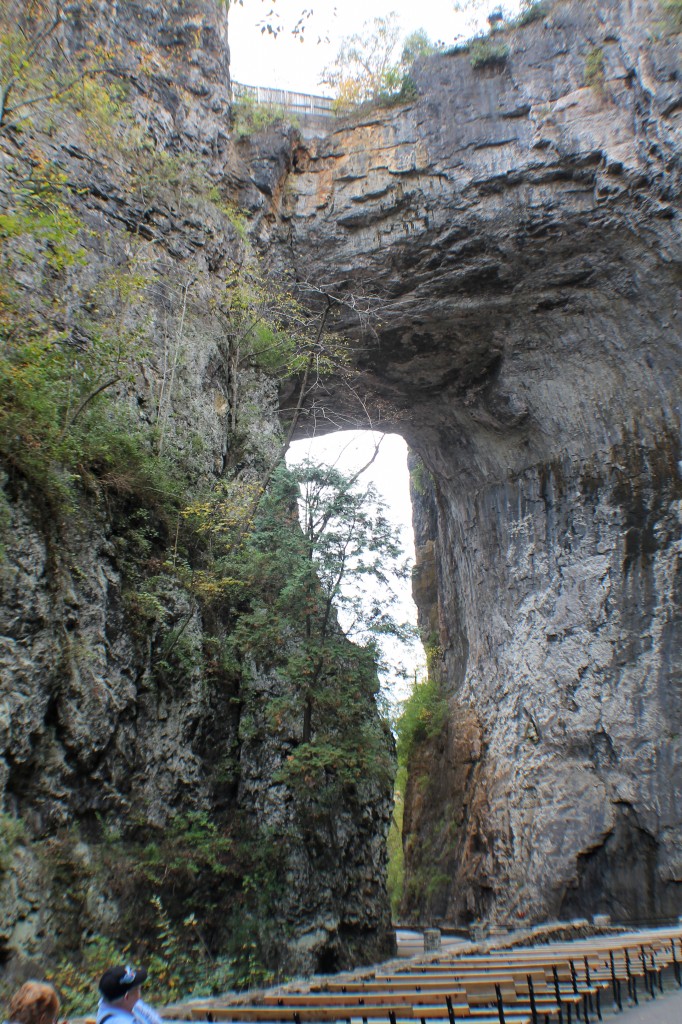Cedar Creek Trail is a nice pathway leading under the natural bridge and up the creek to other attractions. This Trail begins with the walk down Cascade Creek and ends about a mile later at Lace Falls. The Natural Bridge and Monacan Village are on the front part of the trail. Along the path guests can stop by the Monacan Indian Village, stroll to Saltpeter Cave and Lost River, watch Lace Waterfalls, where Cedar Creek tumbles down 50 feet. The trail is fairly flat, but does start to get a little uneven past the Monacan Village with slight hills. Cedar Creek Nature Trail is open daily from 9 a.m. until dark. The length of the trail is just under a mile.
The start of the trail is 137 steps down from the main gift shop and parking lot, or a courtesy bus runs guests down to the trail in a continuous loop. The trail includes many curiosities unique to Natural Bridge, including the 1600 year old Ancient Arbor Vitae tree. A member of the Cypress family, the name in Latin means “tree of life” due to the alleged medicinal value of it’s resin. Before this tree died in 1980, it was the oldest and largest known tree in the world. Native Americans used the foliage as a source of vitamin C to prevent scurvy.
Then, the path goes beneath Natural Bridge cathedral on the historic Cedar Creek Nature Trail.
We were advised to keep our eyes and ears open for wildflowers and wildlife at this Virginia Birding & Wildlife Trail site.
The trail below leads to a recreated Native American Monacan Village. The village depicts crafts and tools necessary to survive in the wilderness.
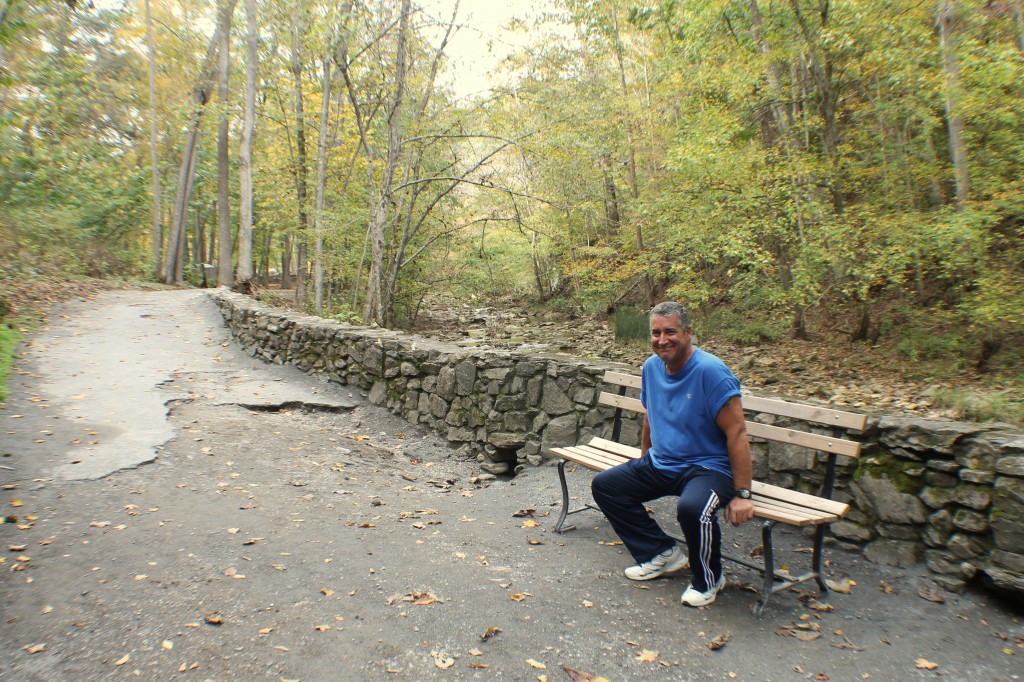
Guests have to step back in time to see what life was like in a typical Native American Village, 300 years ago.
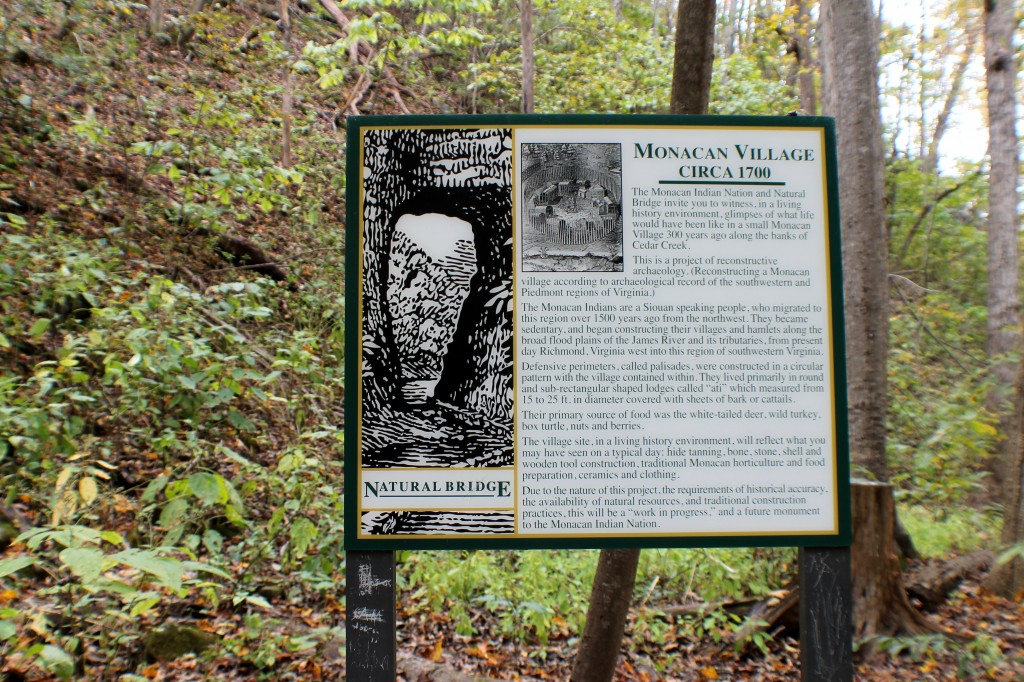
The Monacan Indians are Siouan speaking people, who migrated to this region over 1500 years ago from the northwest. The Monacan village is reconstructed according to the archaeological records of the southwestern and Piedmont regions of Virginia.
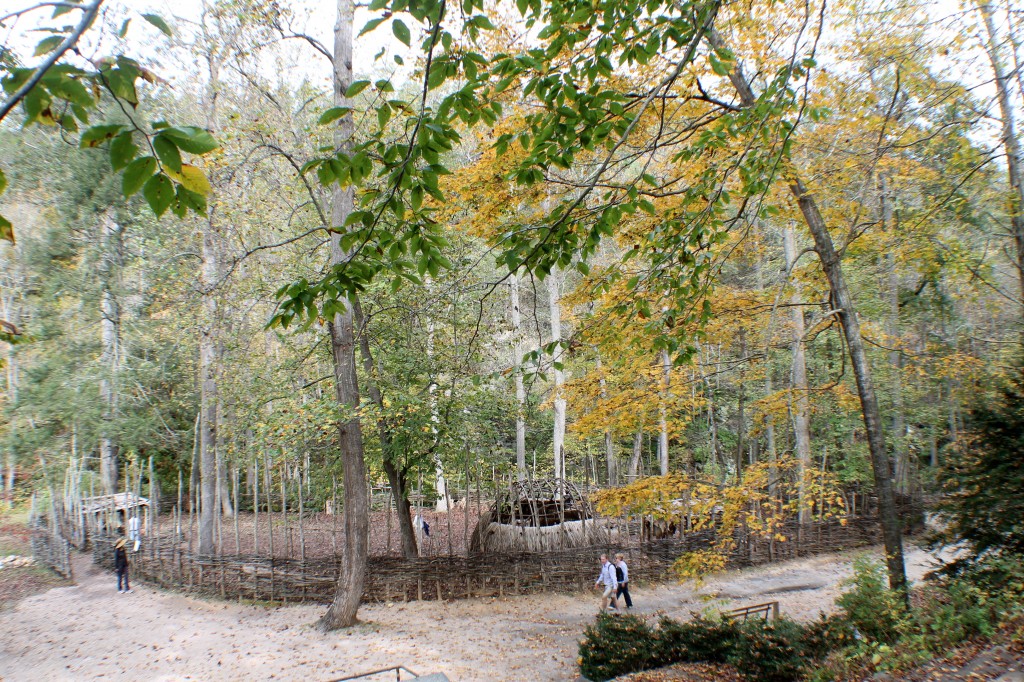
Does it seem like this squirrel is posing in front of the camera?
In the Monacan Indian Village guests can catch a glimpse of what life would have been like in a small village 300 years ago in a living history environment. After founding the first North American colony, Capt. John Smith ventured into Monacan country, where he met one of the area’s most powerful tribes. The village is supposed to help visitors to learn about the people he encountered and relive day-to-day life in a traditional Native American Woodland culture.
The Eastern Siouan’s called this single family dwelling an ATI. These structures were covered with bark, mats or like this home thatched with cattails.
Inside of the ATI.
We were told that usually, a village guide will sit in work shelters and the ati, a hand-constructed house covered in woven cattails, while making tools and baskets. He will conduct presentations throughout the day and be available to answer visitors’ questions about Monacan life, past and present. However, daily activities change seasonally. There was someone, supposedly an Indian, who showed the process of making jewelry.
In the back next to the ATI is the Work Shelter. Activities related to this structure involve basket weaving, clothing construction, food preparation, pottery and other jobs considered as women’s work.
Communal Cooking area. Shared cooking areas allow for a variety of cooking techniques such as roasting over the fire, utilizing the ashes for baking, flat stones as griddles, clay pots for boiling and for drying food for storage.
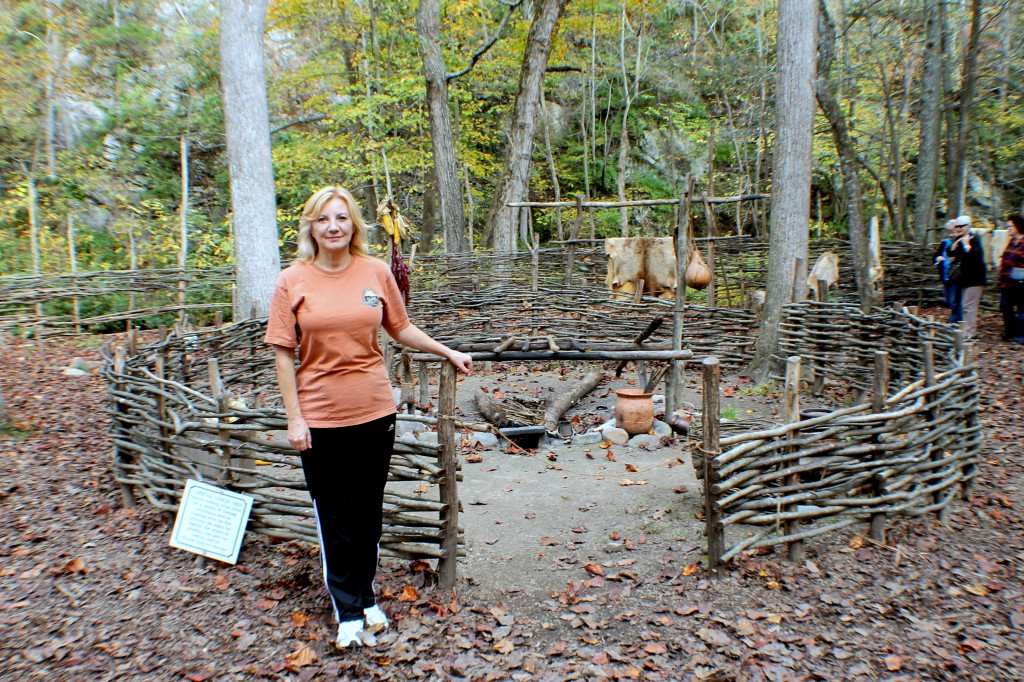
This bridge leads to the Saltpeter Cave, but the Cave was roped off at the time. The information provided by the cave sign says that during the war of 1812 and the Civil War (1861-1865), earth from the Saltpeter Cave was mined for the bird and bat droppings that it contained, to make gunpowder. The earth was saturated with cold water and left in hoppers for a day or two. Once boiled in iron kettles, the mixture of earth and water, called “soak”, was filtered through wood ashes, producing a clear solution named nitrate of potassium. Boiled for a second time, the liquid was converted into crystallized salts or “saltpeter”, and used to make gunpowder.
The Saltpeter Cave.
Along the walk path, not far from the Natural Bridge, we came upon the “Lost River.” Legend has it that many attempts have been made to find the source of this underground Lost River, but have failed.
Along the trail can be seen a hole blasted in the ground to explore an underground Lost River. The river was heard flowing underground by Saltpeter Cave miners who were working nearby. Various attempts were unsuccessful to find either the source or destination of the subterranean river.
Following the trail.
We walked to where the path ended at Lace Waterfalls where Cedar Creek plunges 50 feet to the creek bed. It originates 180 miles away in the Alleghany Mountains and flows under the Natural Bridge another mile to the James River. It is kind of far away, so we could see only a part of the warefall.
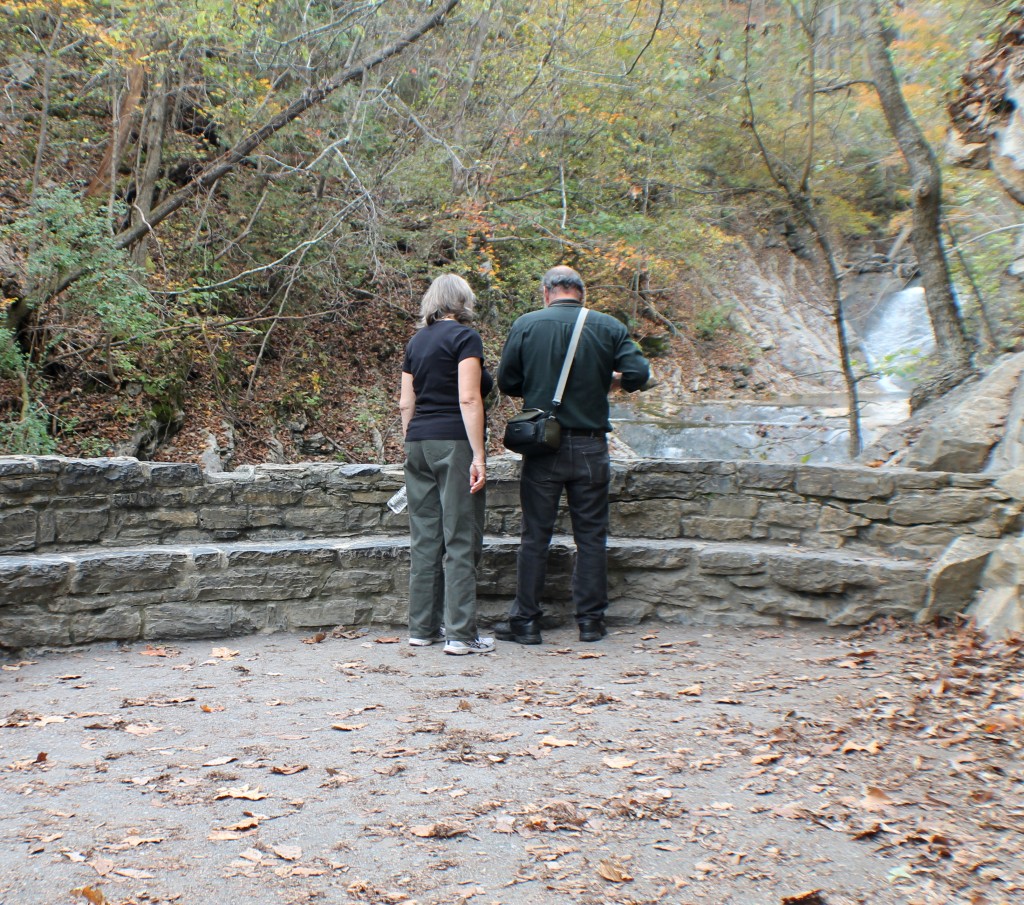
Cedar Creek Trail ends at Lace Falls. The waterfall is about a mile up the trail.
I have never seen a tree like this before. I could see through the crack in its trunk.
Passing through Monacan Village on the way back to the bridge. Monacan Indians were first believed to have discovered the Natural Bridge while trying to escape an advancing enemy a long time ago. They deemed it “The Bridge of God”.
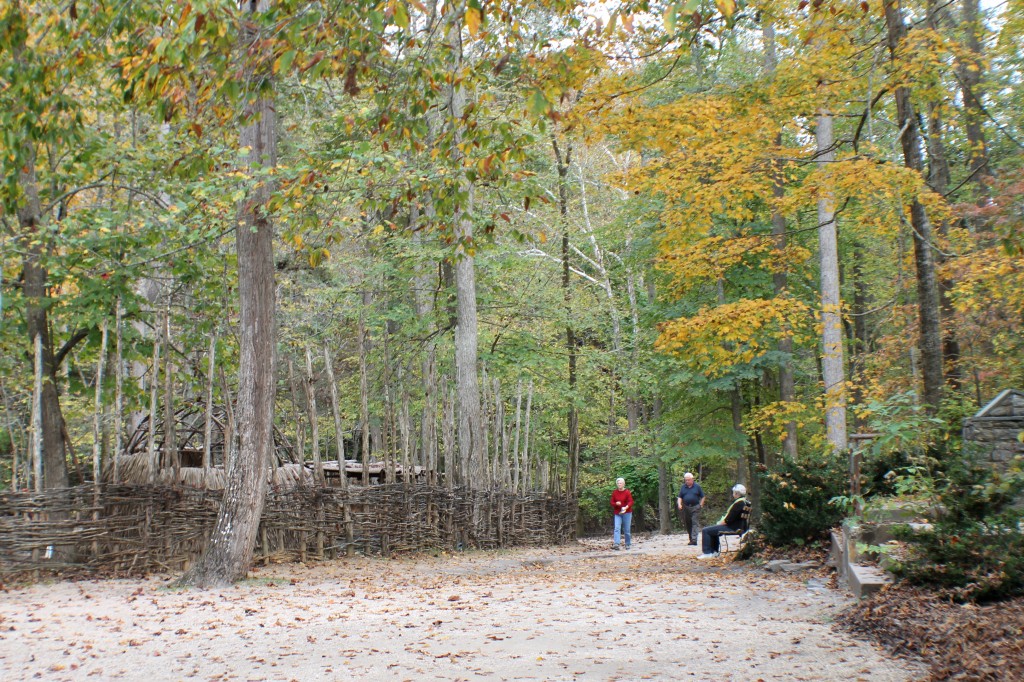
In general, we didn’t see anything spectacular on the Ceadar Creek Trail, but the trail was pretty, fairly short and full of history. In addition, it was a beautiful warm day without a weekend crowd, which added fun to our walk. Besides, we had a chance to enjoy a beautiful view of the Natural Bridge again.
